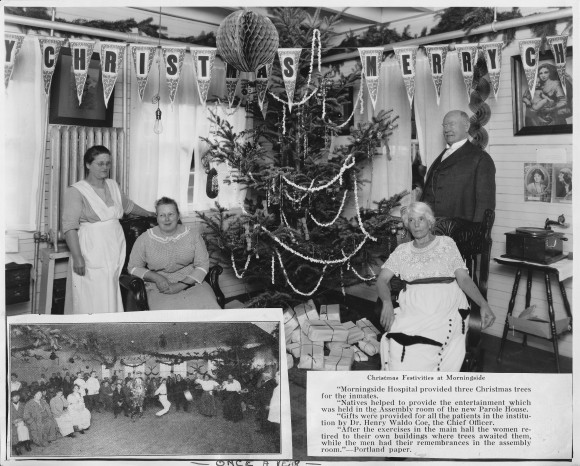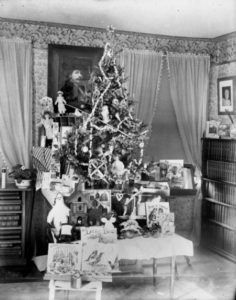Most asylum superintendents, especially at the beginning of the asylum era, wanted to recreate a home atmosphere for patients. They often arranged outings, dances, and other activities that tried to normalize life for patients. Holidays, of course, can bring sadness to anyone remembering the past and asylum patients undoubtedly had an especially rough time during any festive season.

At Christmas, asylum staff and the surrounding communities tried to remember these forgotten people. Many civic organizations donated food and clothing to insane asylums, or sought to make the patients more comfortable. Churches, school bands, and choral groups would visit asylums to sing and entertain patients, and money was usually set aside in some way for improved meals. The Milwaukee Sentinel wrote on December 25, 1903 that:
“Inmates of the county insane asylum will enjoy rabbit stew, oysters, and plum pudding for dinner today. The Christmas tree entertainment was held last evening, and the program of music and recitations was followed by dancing and bags of candy and fruit were distributed.
“The usual Christmas festival for the patients of the Milwaukee Hospital for Insane was given on last evening. A Christmas tree, illuminated by colored electric lamps and laden with presents, a concert by the hospital orchestra, and dancing, comprised the entertainment. Every patient received a present and refreshments were served. A special breakfast and dinner will be served today, and skating on the lake will be indulged in.”

These and similar festivities elsewhere were aimed at patients, but very likely heartened the staff as well.



